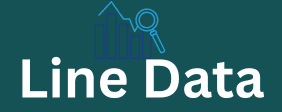Cold calling remains a powerful tool for reaching new customers, even in an increasingly digital world. However, successful cold calling in European markets requires an understanding of cultural differences, local business norms, and legal regulations. By adapting your approach, you can significantly improve engagement and conversion rates. Here are the top cold calling techniques tailored for European markets.
1. Research and Personalization
Cold calling without preparation is a wasted opportunity. In Europe, where business etiquette varies from country to country, researching your prospects thoroughly is essential.
- Understand local business practices: Some cultures prefer a direct approach (Germany), while others appreciate a more relationship-building style (Italy, Spain).
- Use LinkedIn and company websites: Personalize your pitch with insights about their company, role, and industry trends.
- Speak their language: While English is widely spoken in business, addressing prospects in their native language can increase trust and engagement.
2. Compliance with GDPR Regulations
Unlike the U.S., Europe has strict data protection laws. The General Data Protection Regulation (GDPR) requires businesses to obtain consent before using personal data for sales calls.
- Only call verified business numbers and avoid personal numbers unless consent is provided.
- Mention your company and purpose at the beginning of the call to build transparency.
- Offer an opt-out option to comply with European privacy laws.
3. Cultural Adaptation
Different European countries have unique business etiquettes, and recognizing these differences can make your calls more effective.
- Germany: Be direct and professional. Keep your pitch concise and value-driven.
- France: Focus on building rapport italy mobile database before making a sales pitch. A relationship-first approach works best.
- United Kingdom: Maintain a polite and friendly tone. Decision-makers appreciate well-researched proposals.
- Spain & Italy: Show enthusiasm and engage in small talk before discussing business.
4. Perfect Your Opening Statement
The first 30 seconds of a cold call determine its success. European professionals are often busy, so grabbing attention quickly is key.
- Use their name: “Hello [Name], I came cybersecurity and the pandemic: how to organize remote access safely across your company and wanted to share something valuable.”
- Highlight value immediately: Instead of saying “I’m calling to introduce my company,” say “I have a strategy that could help your team increase revenue by 20%.”
- Ask engaging questions: “Are you currently facing [specific industry challenge]? We’ve helped similar companies resolve this efficiently.”
5. Follow-Up Strategy
European professionals may not commit immediately. A well-structured follow-up strategy helps maintain interest.
- Send a follow-up email summarizing key points after the call.
- If they showed interest but need time, schedule a follow-up call in a few days.
- Share case studies or testimonials from loan data European clients to build credibility.
Final Thoughts
Cold calling in European markets requires more than just a sales pitch—it demands cultural awareness, personalization, and compliance with regulations. By applying these tailored techniques, businesses can improve engagement, gain trust, and increase conversions across Europe.
